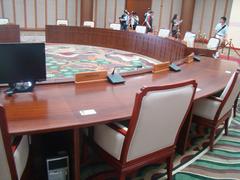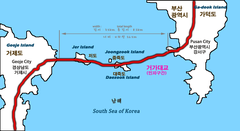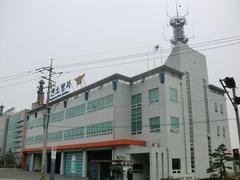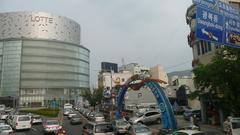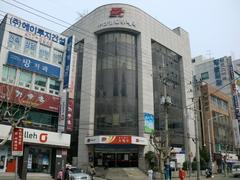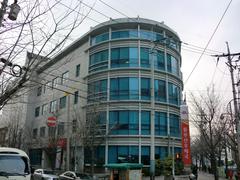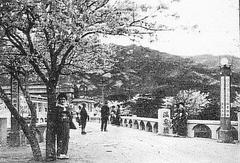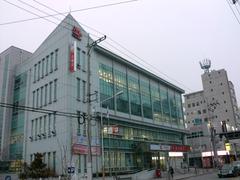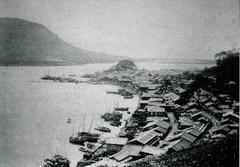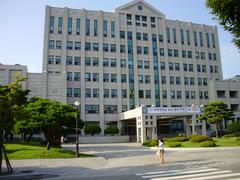
Chungnyeolsa Shrine: Visiting Hours, Tickets, and Complete Guide to Busan’s Historical Gem
Date: 04/07/2025
Introduction
Chungnyeolsa Shrine, nestled in the historic Dongnae District of Busan, stands as a powerful monument to Korea’s enduring spirit and patriotism. Established in the early 17th century to honor the valiant defenders of Korea during the Imjin War (1592–1598), the shrine is a premier destination for those seeking to explore Korea’s rich historical narrative, architectural beauty, and tranquil surroundings. This guide offers everything you need to know about Chungnyeolsa Shrine—including its history, visiting hours, ticketing, accessibility, travel tips, and nearby attractions—ensuring you make the most of your visit to this cultural landmark.
Contents
- Historical Background
- Origins and Foundation
- Expansion and National Importance
- Architectural Highlights
- Role in Korean Identity
- Preservation and Modern Significance
- Visitor Information
- Visiting Hours and Tickets
- Accessibility and Guided Tours
- Directions and Transport
- Tips for Visitors
- Special Events and Experiences
- Nearby Attractions
- Frequently Asked Questions (FAQ)
- Key Figures and Memorials
- Historical Timeline
- Conclusion and Recommendations
- References and Further Reading
Historical Background
Origins and Foundation
Chungnyeolsa Shrine was originally built in 1605 as Songgongsa to honor Song Sang-hyeon, the magistrate of Dongnae who valiantly resisted Japanese forces during the Imjin War. His unwavering loyalty and ultimate sacrifice became a symbol of Korean patriotism. The shrine was established by Yun Hwon, then Deputy Delegate of Dongnae, within the South Gate of Dongnae Fortress, marking the beginning of a tradition of commemorating local heroes.
Expansion and National Importance
In 1624, the shrine was renamed Chungnyeolsa, meaning “Shrine of Loyal Valor,” and its dedication expanded to include Jeong Bal, commander at Busanjin Fortress, and other officers and volunteers who lost their lives defending Busan. The shrine became central to memorial rites for those who died during the Japanese invasions. Over time, memorial tablets for a total of 93 patriots were enshrined, and annual sacrificial rites, especially on May 25, became significant civic events reaffirming loyalty and resistance against foreign aggression.
Architectural Highlights
Chungnyeolsa’s architecture exemplifies the elegance and symbolism of the Joseon Dynasty. Key features include:
- The imposing 28.6-meter Chungnyeol Monument, depicting figures from all walks of Korean society during the war.
- Traditional wooden structures with tiled roofs and colorful dancheong-painted eaves.
- Landscaped gardens and paved paths creating a serene environment for reflection and remembrance.
- Auxiliary buildings such as the auditorium and study halls, which support educational and community activities.
Role in Korean Identity
Chungnyeolsa is more than a historical monument; it is a living testament to Korea’s national resilience and values. It continues to serve as a focal point for memorial ceremonies, cultural events, and community gatherings, fostering intergenerational connections and reinforcing regional and national pride.
Preservation and Modern Significance
Despite repeated restorations, Chungnyeolsa retains its historic character. The site is maintained through coordinated efforts by local authorities and volunteers, ensuring its preservation for future generations. Its accessibility and educational programs make it a must-visit site for locals and tourists alike.
Visitor Information
Visiting Hours and Tickets
- Hours: Open daily from 09:00 to 18:00. Last admission is 30 minutes before closing (Trip.com).
- Admission: Free for all visitors. Special exhibitions or events may require a nominal fee.
Accessibility and Guided Tours
- Accessibility: Chungnyeolsa offers wheelchair access via paved paths and ramps. Most main areas are easily navigable for visitors with mobility challenges.
- Guided Tours: Available upon request, particularly during memorial events and festivals. Tours provide rich historical context and insights into the shrine’s significance.
Directions and Transport
- By Subway: Take Busan Metro Line 1 to Dongnae Station (Exit 7). The shrine is about a 10-minute walk from the station.
- By Bus: City buses 29, 31, 48, and 49 stop close to the shrine.
- By Taxi: Approximately 20 minutes from Busan Station or Haeundae Beach, depending on traffic.
Tip: Use a navigation or translation app to simplify your journey if you’re not fluent in Korean.
Tips for Visitors
- Visit on weekdays for a quieter experience.
- Spring (cherry and plum blossoms) and autumn (ginkgo and fall foliage) are the most scenic times.
- Wear comfortable shoes; the grounds cover a large area with some uneven surfaces.
- Photography is encouraged in outdoor areas, but please be respectful during ceremonies.
Special Events and Experiences
- Annual Memorial Ceremonies: Held on the anniversary of Song Sang-hyeon’s death and on May 25, featuring traditional Confucian rituals, music, and offerings.
- Seasonal Highlights: Cherry and plum blossoms in spring; vibrant foliage in autumn.
- Cultural Lectures and Workshops: Occasional events in the auditorium, including history lectures and traditional crafts.
Nearby Attractions
- Dongnae Eupseong Fortress: Adjacent to Chungnyeolsa, this restored fortress provides insight into Busan’s military history.
- Bokcheon Museum: Displays archaeological artifacts from ancient Korean kingdoms.
- Busan Tower: Offers panoramic city views.
- Jagalchi Fish Market: The largest seafood market in Korea, perfect for post-visit dining.
- Onchonchon Citizen’s Park and Wenquanchuan Coffee Street: Ideal for relaxation and refreshments.
Frequently Asked Questions (FAQ)
Q: What are the opening hours of Chungnyeolsa Shrine?
A: Open daily from 09:00 to 18:00, last admission 17:30.
Q: Is there an entry fee?
A: General admission is free; some special events may incur a small fee.
Q: Are guided tours available?
A: Yes, particularly during festivals or by request at the information center.
Q: Is the shrine accessible for people with disabilities?
A: Yes, most areas have ramps and paved paths.
Q: How do I get to Chungnyeolsa Shrine by public transport?
A: Take Metro Line 1 to Dongnae Station (Exit 7), or use one of several city bus lines.
Q: What is the best season to visit Chungnyeolsa?
A: Spring and autumn are especially beautiful due to floral and foliage displays.
Key Figures and Memorials
- Song Sang-hyeon (1551–1592): Magistrate of Dongnae, martyred for resisting Japanese forces.
- Jeong Bal (1553–1592): Commander at Busanjin Fortress, honored for his heroic defense.
Their memorial tablets and portraits are central features, underscoring their enduring legacy.
Historical Timeline
- 1592: Imjin War erupts; Song Sang-hyeon and Jeong Bal die defending Busan.
- 1605: Songgongsa shrine established.
- 1624: Renamed Chungnyeolsa; Jeong Bal enshrined.
- 1625: Shrine relocated to current site; Allak Seowon constructed.
- Modern era: Annual memorials institutionalized; site undergoes preservation and restoration.
Conclusion and Recommendations
Chungnyeolsa Shrine is a vital historical and cultural landmark in Busan, offering profound insights into Korea’s history, values, and architectural traditions. Its tranquil setting, educational programs, and annual ceremonies make it a rewarding stop for anyone interested in Korea’s past or seeking a peaceful retreat from the city. Whether you’re a history buff, photographer, or cultural traveler, Chungnyeolsa invites you to reflect on the enduring values of loyalty and resilience.
Plan your visit today—and for enhanced experiences, download the Audiala app for guided tours, interactive maps, and up-to-date event information. For more inspiration, explore related articles on Busan’s historical sites, and follow our social media for the latest news and travel tips.
Visuals and Media
- Main hall of Chungnyeolsa Shrine
- Map of Chungnyeolsa Shrine and surrounding Busan historical sites
Internal Links
External Links
- Chungnyeolsa - Wikipedia
- Tripomatic - Chungnyeolsa Shrine
- Korea Orbit - Chungnyeolsa
- Trip.com Chungnyeolsa Shrine Guide
- ExploreCity Busan Travel Info
Summary and Visitor Recommendations
Chungnyeolsa Shrine serves as a living memorial to Korea’s history and enduring values. Its well-preserved architecture, educational programs, and annual ceremonies offer an immersive experience for all visitors. Open daily with free admission and equipped with accessible facilities, the shrine is a highlight of Busan’s cultural itinerary. Combine your visit with nearby historical sites for a comprehensive exploration of the city’s heritage.
For a deeper dive, consult these resources:
- Chungnyeolsa - Wikipedia
- Korea Orbit - Chungnyeolsa
- Trip.com Chungnyeolsa Shrine Guide
- Tripomatic - Chungnyeolsa Shrine


